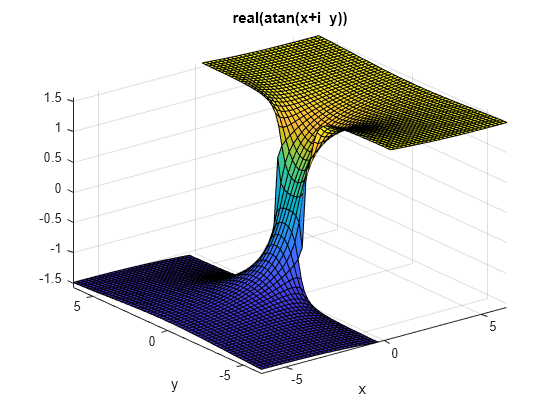ezsurf
(Not recommended) Easy-to-use 3-D colored surface plotter
ezsurf is not recommended. Use fsurf instead. For more information, see Version History.
Syntax
Description
ezsurf(
plots over the specified interval.f,xyinterval)
ezsurf(
plots the parametric surface using the specified interval.funx,funy,funz,uvinterval)
ezsurf(___, plots using an
n)n-by-n grid. Use this option after any
of the input argument combinations in the previous syntaxes.
ezsurf(___,'circ') plots over a disk centered on
the interval.
ezsurf( plots into
the axes specified by ax,___)ax instead of the current axes. Specify
the axes before any of the input argument combinations in any of the previous
syntaxes.
s = ezsurf(___) returns the chart surface object.
Use s to modify the surface after it is created. For a list of
properties, see Surface Properties.

